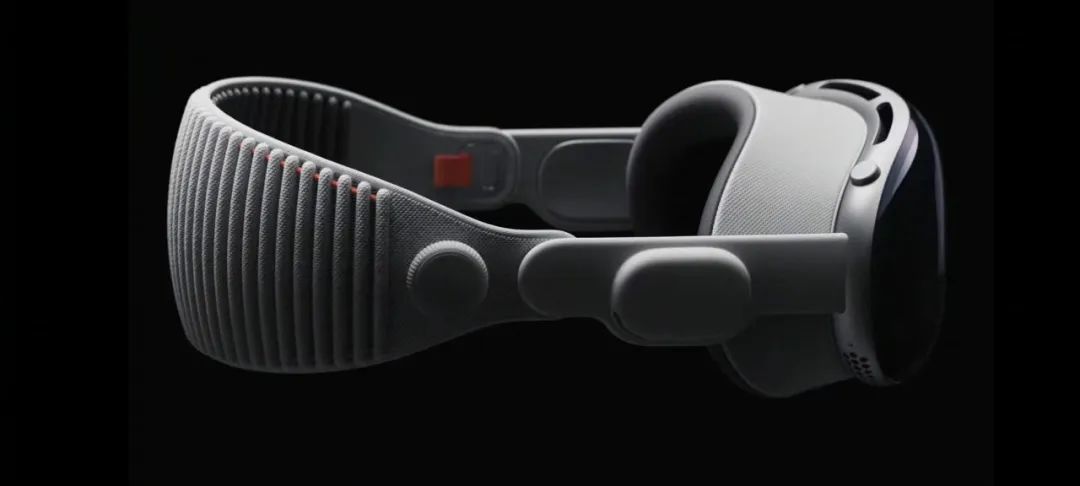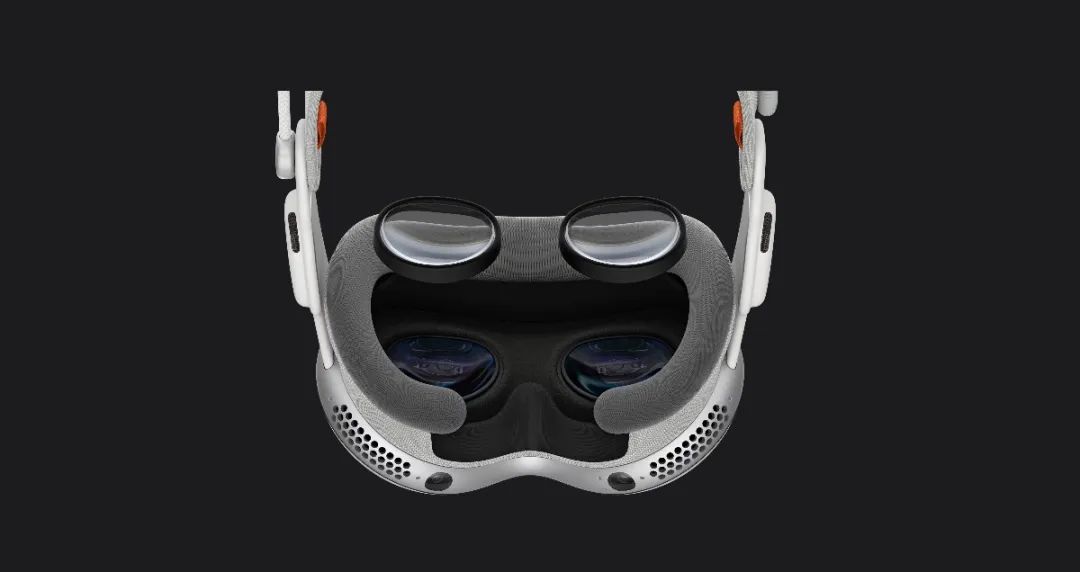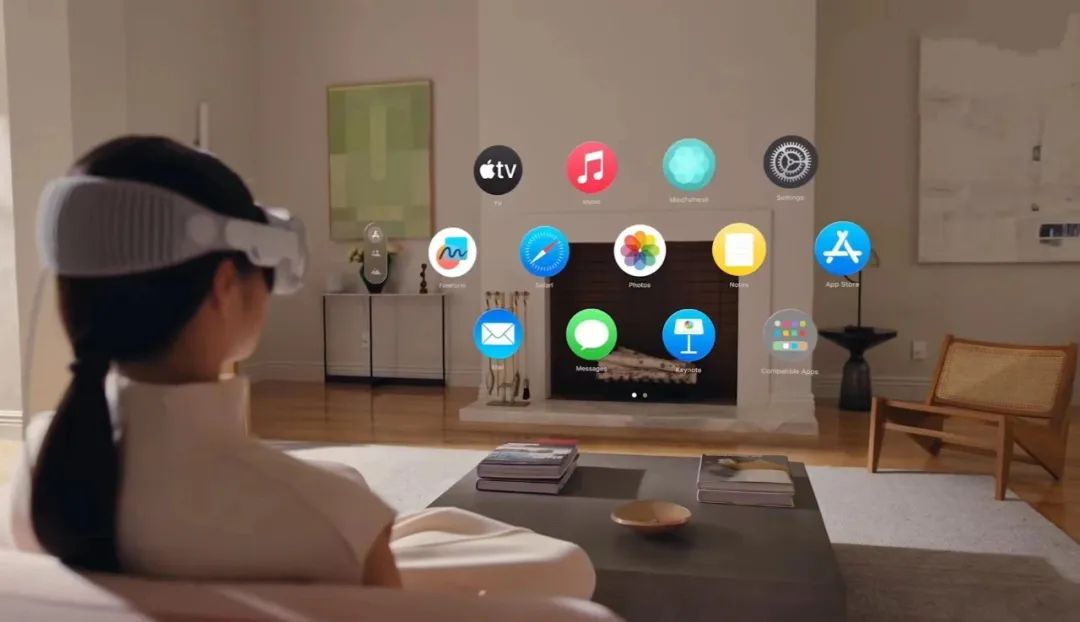Could Cats and Dogs Restart the Metaverse?
![]() 07/03 2024
07/03 2024
![]() 549
549
Within the walls, the ground was covered with yellow sand, burying all living things, leaving only sparse crowds and an endless desolation. However, upon donning a specially designed helmet-mounted glasses, the desert transformed into an interstellar market in an instant, with countless shops standing tall and prosperity shining.
This is a scene from the movie "Valerian and the City of a Thousand Planets," and it is also a scene that director Luc Besson has dreamed of since his youth. Immersed in the original comic world since childhood, Luc Besson has finally realized his vision with the high maturity of modern film special effects technology, collaborating with the original special effects team of "Avatar 2" to create this "visual science fiction film".
Looking back at the changes in the technology industry over the past few years, this shopping scene set in the 28th century is no longer a distant dream but is flooding into people's lives in a more lightweight form.
Recently, the Apple Vision Pro national version went on sale, and various domestic players eager to ride the wave have announced their application compatibility. Among them, compared to content-oriented players like Tencent Video and Kuaishou, the urgent pace of e-commerce giants is undoubtedly more worthy of study:
Long before the sale, Taobao and JD.com had already rolled out their Vision Pro applications, attempting to forcibly initiate a shopping revolution from 2D to 3D space. However, just like the "e-commerce metaverse" craze a few years ago, while this attempt has more certainty at the implementation level, the contradiction between supply and demand remains unresolved.
The "e-commerce metaverse 2.0" ignited by Apple Vision Pro may still be a thorough marketing scheme.
E-commerce Metaverse, Entering 2.0?
Looking at the Vision Pro application strategies of Taobao, JD.com, and Best Buy, the playing methods of each are broadly similar. Based on Vision Pro, users can browse 3D models of products before purchasing and restore the products 1:1 into the augmented reality environment for matching and preview.
The paths converge, but there are also differences. For example, at the "infrastructure" level, a technical leader from an e-commerce company once mentioned that some competitors' Vision Pro versions were slightly behind - "You can only view, not buy or trade, but our product allows ordering." Taobao, who was mentioned, immediately responded by launching a 2.0 version, opening up complete shopping functions such as login, search, messaging, and ordering.

The bigger difference lies in the purpose of players rushing to embrace Vision Pro.
For JD.com, content has always been its weakness. Compared to other players in the same industry, JD.com has been lacking in short videos, communities, and live streaming. Therefore, since the beginning of this year, from investing 1 billion yuan to support short videos to mass-producing AI digital humans for live streaming, JD.com has been active in the content field, and leveraging Vision Pro's virtual shopping "using experience to exchange for content" may also be part of its strategy to address its weaknesses.
For Taobao, Vision Pro seems to carry its unextinguished heart for the e-commerce metaverse. Currently, Taobao is still adding content to "Taobao Life"; even as numerous digital collection platforms represented by Tencent's "Huanhe" have fallen silent, Ant Group, which is deeply tied to Taobao, is still cheering on its digital collection platform "Jingtan" in the domestic "special advertisement" for this year's European Cup.
However, compared to Taobao Future City, Tmall Ideal Living Space, and JD.com's virtual live streaming attempts during the e-commerce metaverse 1.0 era, this round of e-commerce coupling with Vision Pro has a much clearer implementation path.
Why did the attempts in the e-commerce metaverse 1.0 stage fail repeatedly?
One major reason is that due to the costs and technologies of 3D modeling, rendering, optimization, etc., the metaverse worlds built by players were more inclined towards a "play" nature. The content was rough, hollow, and lacked experiential value, so users were naturally unwilling to pay for it - take Taobao Future City, for example, lag and clipping issues were commonplace, and the experience was not one of traveling to the future but rather returning to the past.
In contrast, both hardware carriers and XR scenario development have undergone significant changes at this stage.
On the one hand, Apple's entry into the market, with a large number of "believers," has accelerated the elevation of XR to the level of a "trend" in various industries, and the hardware stacked by Apple Vision Pro has lowered the threshold for players to "amaze" users.
Taking Taobao's Vision Pro version as an example, both gesture dragging and eye movement interaction actually originate from Vision Pro's own hardware foundation. Although Taobao is standing on the shoulders of giants, it does not hinder it from achieving a stunning experience through hardware advantages.
A user who has experienced Vision Pro's e-commerce application told Photon Planet that compared to simply browsing and placing 3D products, they prefer to stack furniture and appliances together and then "pull out the rug from under their feet" or throw them around, releasing repressed destructive urges. "Although it's not serious, to be honest, messing around at home with Vision Pro is much more fun than many games."
On the other hand, as a major constraint in the past XR ecosystem, the high cost of application development has been alleviated by the increasingly mature AIGC applications.
Leading game developers have improved production efficiency through AIGC. Taking NetEase as an example, AIGC has already been deployed in scene design, character generation, original painting design, realistic digital humans, and other aspects; Roblox, which popularized the concept of the metaverse, has also introduced AI material generators, code assistants, and other efficiency-enhancing tools.
However, despite e-commerce players continuously hinting at the possibility of "next-generation e-commerce," the concept's hype cannot conceal doubts about "form over substance."
Spatial Shopping, a Castle in the Air
Recently, a series of technological bloggers'鼓吹 have garnered significant discussion about "immersive shopping" on various content platforms. However, aside from ineffective viewpoints from the atmosphere group, actual discussions are still largely limited within the industry and have yet to break out to attract widespread public attention.
The essential reason lies in the lack of both supply and demand behind immersive shopping - it is like a castle built in the air.
First, immersive shopping is not simply about copying and projecting 2D content into XR devices but rather achieving spatial shopping scenarios similar to those demonstrated by Taobao and JD.com. The latter requires 3D models of rigid demand products, but currently, e-commerce platforms and merchants generally lack relevant supply.
It needs to be acknowledged that compared to the past, the threshold for scanning and generating 3D models of objects has been significantly reduced.
On the one hand, flagship iPhone models' lidar and spatial video shooting capabilities already support 3D scanning of physical objects, allowing for 3D model output without modeling, and being compatible with the Vision Pro ecosystem, eliminating the past issues of "back pain from computer modeling, full-body pain from VR modeling."

On the other hand, the rapid iteration of AIGC has also lowered the threshold for converting 2D content to 3D. Taking the aforementioned "Taobao Life" as an example, it already supports users uploading photos to generate their own 3D digital avatar; models like "InstantMesh" released by Tencent ARC Lab can also render a single static photo into a 3D model in less than a minute.
This seemingly feasible path supports e-commerce players in outlining a blueprint for "next-generation shopping."
Regarding this, an industry insider told Photon Planet that while 3D scanning with a mobile phone can replicate the shape of an object, the fineness of details and realistic presentation of materials are still lacking.
"Models obtained through 3D scanning are usually fixed, one-time outputs, lacking room for post-adjustment. Aspects like model accuracy, texture materials, etc., are far inferior to continuously optimized manual modeling. Even manual modeling cannot match the fine details of high-resolution photos and videos, such as the texture of fabrics, the sheen of metals, or the transparency of glass."
The focus of spatial shopping lies in realizing the display and presentation of goods through new media. Therefore, from the user's perspective, both lightweight generative AI modeling and low-cost 3D scanning modeling are somewhat "distorted" and difficult to satisfy users.
To ensure high-quality presentation of product models, brands and merchants need to invest higher costs. Even though 3D modeling in product design and production can be used for product display on spatial shopping platforms, it is not easy to apply it in bulk due to industry differences, brands, and the long link of merchants.
Zhizi, an independent women's clothing merchant, told Photon Planet that their clothing production process generally uses sketches and CAD for design, followed by fabric selection, pattern making, and production. 3D modeling is not the mainstream.
"Although it is possible to convert 2D designs into 3D models through format conversion or plugins, the results are too rough and still require a lot of effort to optimize. For us, this does not have much practical significance. The choice of fabric, the direction of stitching, and the splicing of fabrics are still more intuitive in physical form, and any adjustments can be made quickly and conveniently."
Another industry insider said that most brands are still traditional enterprises in essence, with long internal communication links and each part operating independently. Even minor matters can evolve into complex bureaucratic procedures. It can be imagined how difficult it is for merchants who interface with sales teams to obtain product modeling files from brand design departments.
Therefore, for a wide range of merchants, compared to traditional product display media such as shooting product images and videos at this stage, adapting to spatial shopping means a doubling of workload, facing financial and time costs from technology selection to content delivery, as well as the test of conversion effects - even the ordering scenarios on Taobao's current Vision Pro version mostly remain within the "2D" category, with a clear lack of 3D product supply.
If Vision Pro explodes in popularity in China, with everyone owning one, merchants would naturally be willing to enter the market at high costs. However, for now, domestic users seem to be unimpressed.
According to media reports, many people预约体验Vision Pro at Apple's offline stores, but actual buyers are scarce. Nearly a week after its launch, many stores still have stock, and even the "scalpers" who were previously狂热 have disappeared from this round of sales.
For merchants, the lackluster sales of Vision Pro mean that the sales growth brought by product adaptation to spatial shopping is not enough to offset the costs. After all, predictable profitability is the guarantee for a business to grow.
Although XR provides a novel experience for e-commerce, without a breakthrough in both supply and demand, its role is limited to being a supplement to traditional e-commerce, especially in specific categories like furniture and appliances, making it difficult to ascend to "next-generation e-commerce."
In Conclusion
XR technology has been developing for over a decade, and the factors hindering its development have gradually shifted from technology to scenarios and content.
The question is, the wave has already been set off, but why did e-commerce players ultimately choose Vision Pro as their landing field? After all, the "dimensional wall" between consumers and shopping platforms is not something that only Vision Pro can break - the eye-tracking and gesture control interaction experience supported by Apple Vision Pro can also be achieved by the Meta Quest Pro released at the end of 2022.

The reason behind this is that "next-generation e-commerce" and "immersive shopping" are not the focus. What's important is leveraging the sales momentum of Apple Vision Pro to launch a premeditated brand value communication campaign. Similar to the past "Taobao Future City," although user growth is not apparent, brand live streaming entry points cannot be overlooked.
As mentioned earlier, it is currently arduous and unrewarding for merchants to embrace the XR wave. However, looking at the spatial shopping scenarios of Taobao and JD.com, there are still a large number of brands choosing to collaborate. For example, brands like Samsung TV, Casarte refrigerators, Robam appliances, and Harman Kardon have cooperated with JD.com, while Taobao has secured clients like DJI, Xiaomi Automobile, Maison Margiela, and M.A.C. - all powerful players in their respective fields.
Similar to the stream-of-consciousness advertising favored by luxury brands - selling goods is not the priority, but telling a compelling story is. For example, Xiaomi SU7's "virtual test drive" or Maison Margiela's 3D brand showcase aim to塑造 brand foresight and technological sense through Vision Pro's visual impact and interactive experience.
For now, this round of marketing has captured a certain amount of traffic for "cats and dogs" in the short term. However, separate from the marketing itself, the spatial shopping format seems intolerant in the current consumer context, just as William Gibson, the "father of cyberpunk," once said - "The future is here, it's just unevenly distributed."
"






